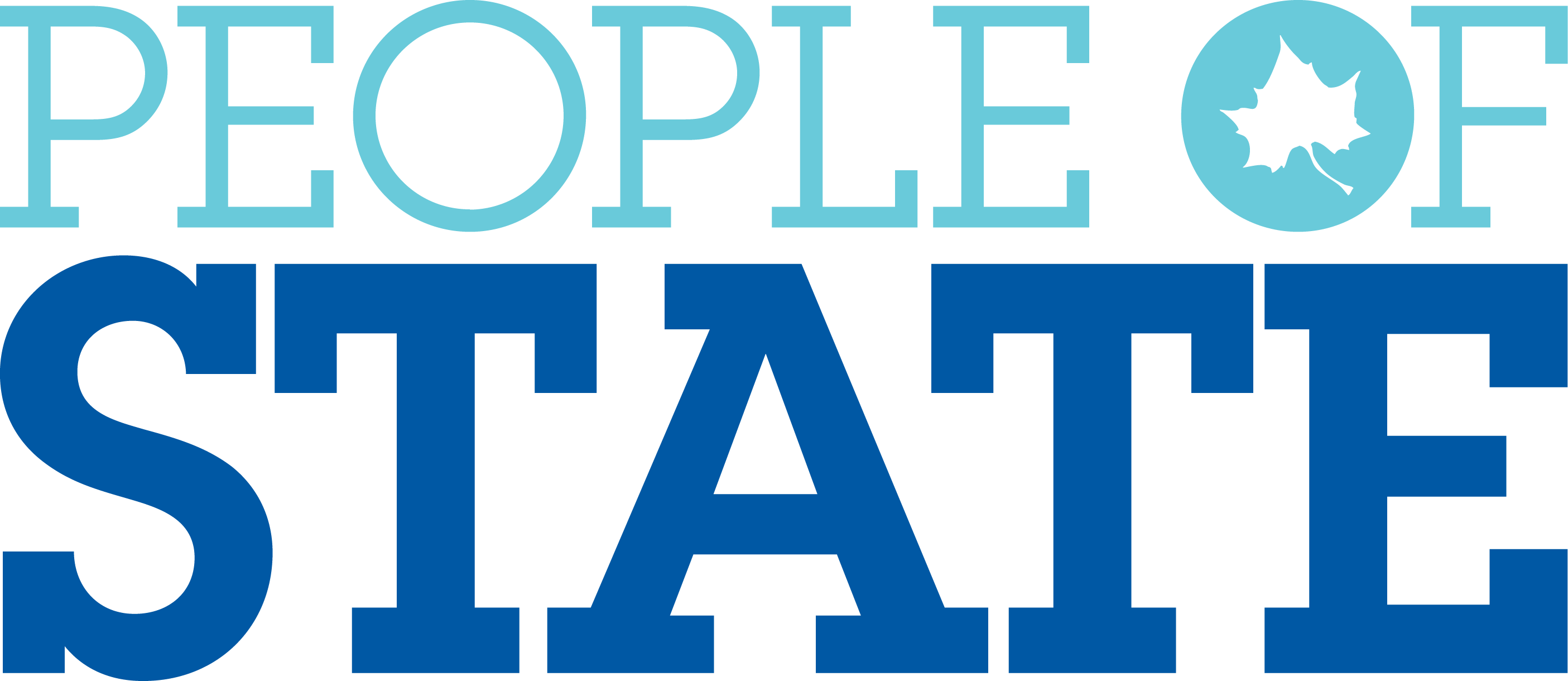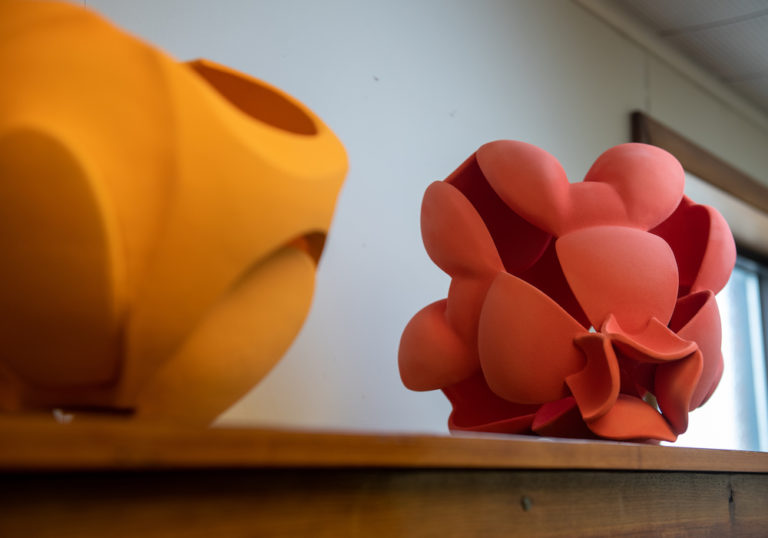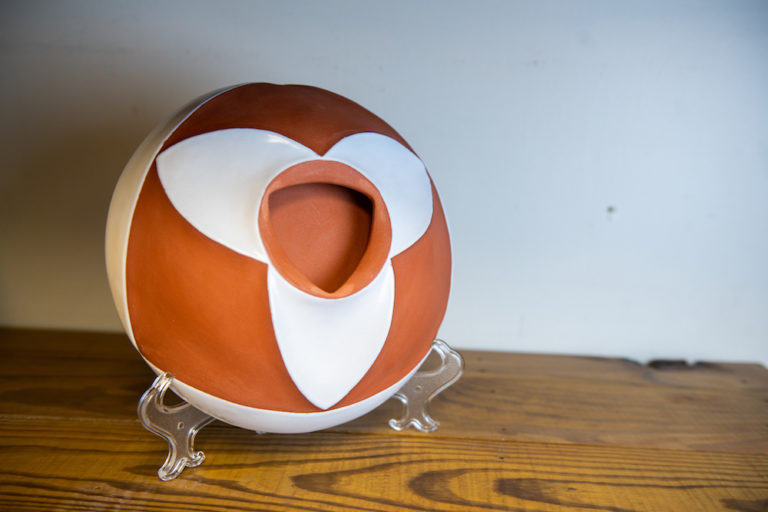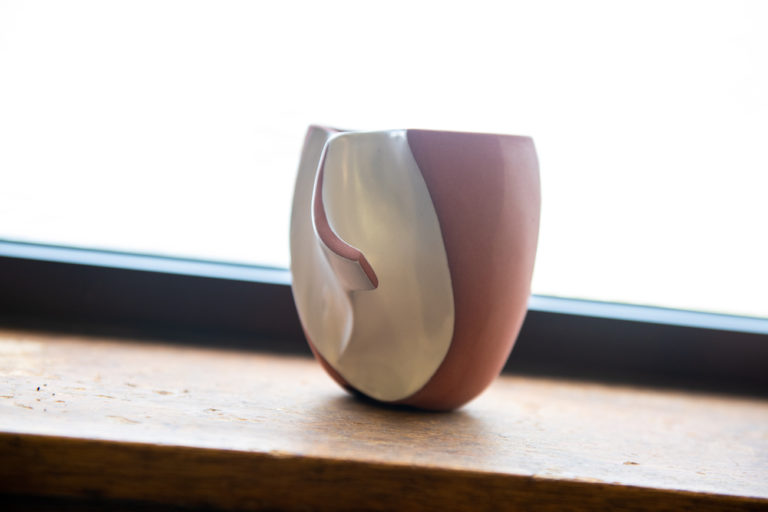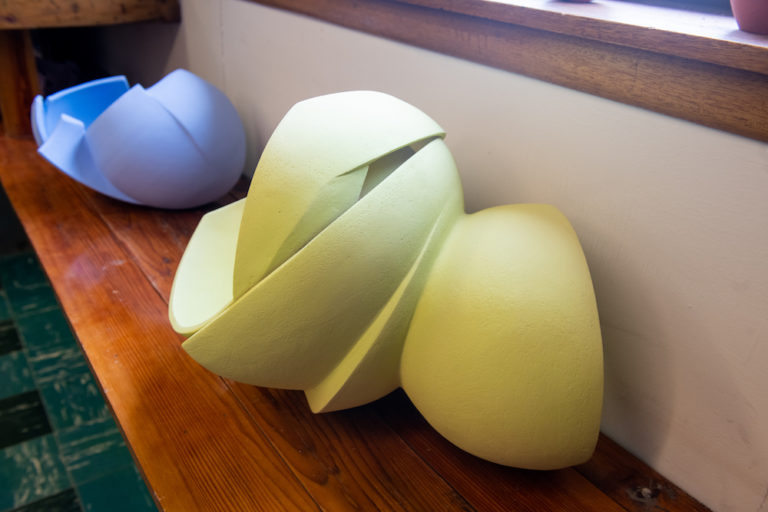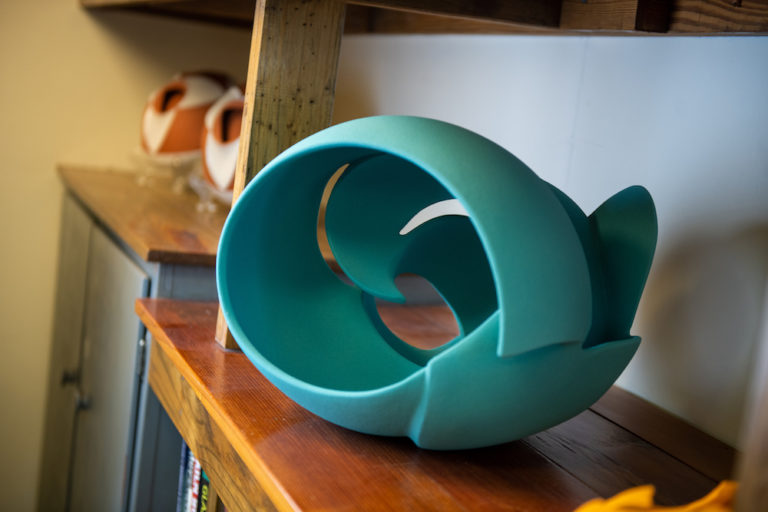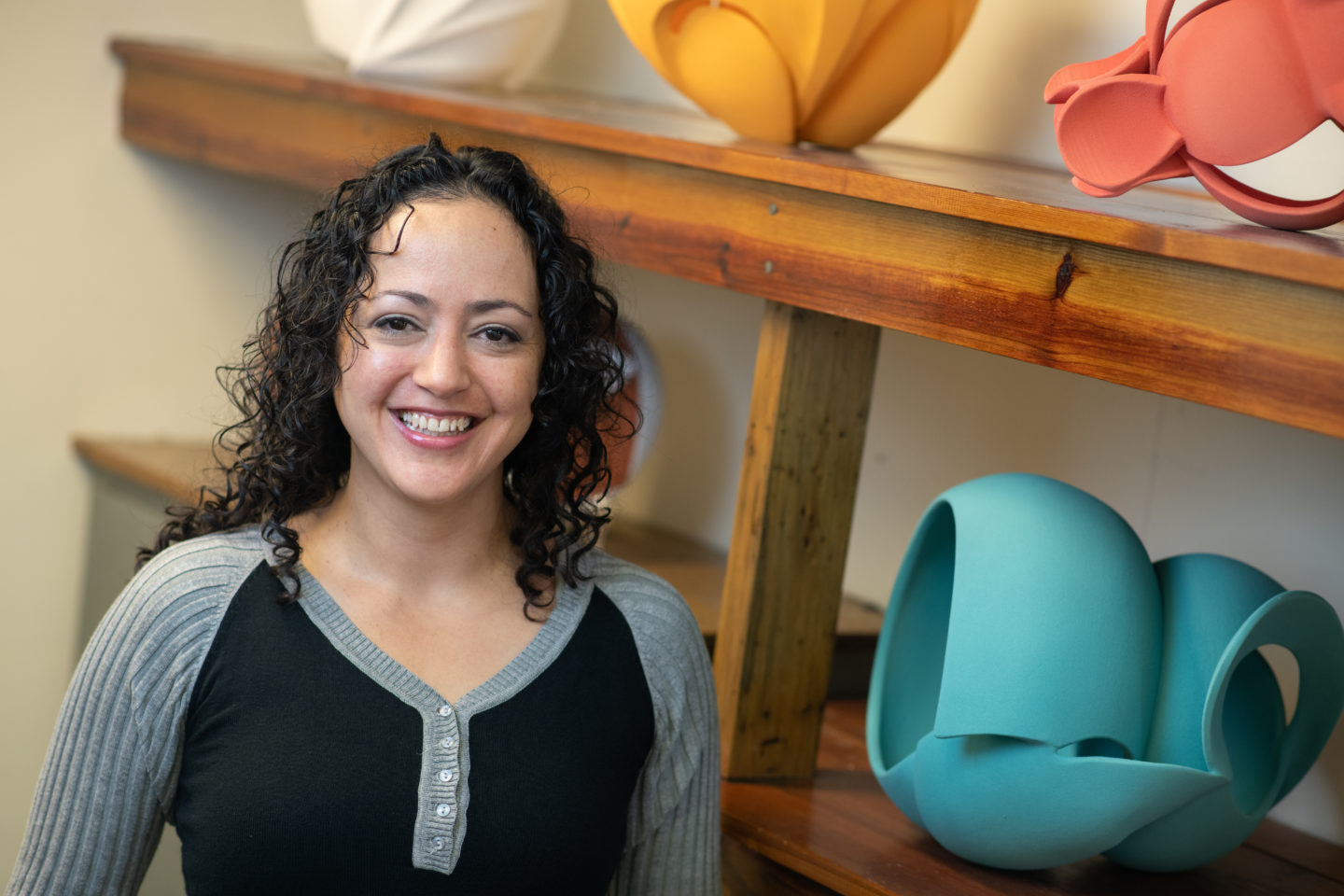
Kira Enriquez Loya
By Indiana State University
Nov 21, 2019
Kira Enriquez may physically be thousands of miles away from her childhood home in Namiquipa, Chihuahua, Mexico, but every piece of work created by the Indiana State University associate professor of ceramics brings her and its viewers a little bit closer to this western Mexico mountain town.
“Though I’ve lived (in the U.S.) for years now, the first aspects that come to mind when I think of Mexico is its food and bright colors, and using them in my art is a way to keep connected with my background,” said Enriquez, who is the youngest of six children. “Since I grew up in a big family, I would follow my siblings’ example while trying to find my own voice, and I learned that we, as a group or a society, need to interact with each other as we find our individual personalities. The pieces in the “unity” series embody my interactions with other individuals and represent the dynamism of the vessel that although its parts shift and seem to separate from each other, they all still belong to one unit.”
Drawing inspiration from nature, family life and unity, Enriquez begins creating pieces with one vessel, breaking it up and rearranging the pieces in different settings.
“Although my work is very sculptural, functional work is what made me pursue ceramics,” she said. “In my own experience, I’ve been fortunate to meet people and have friends from many countries, so I am making this body of work that through these functional objects will inspire people to interact and I hope to spark communication.”
Enriquez spent her early years drawing everything she could.
“Since I was little, I think drawing was something I always liked to do,” she said. “I tried other disciplines before I committed to art, but while I was doing art workshops on the side I decided art was what I needed to be doing.”
In her undergraduate years, she decided to pursue sculpture when the school didn’t have a ceramics program.
“Once I got into ceramics, I knew it was for me,” said Enriquez, who started ceramics classes in 2004. “Clay is one of few materials that is plastic by nature. Its versatility to be transformed into any shape makes clay my preferred media. I enjoy making the functional pieces because it allows me to create a humble bowl, plate or cup that can help sustain our existence.”
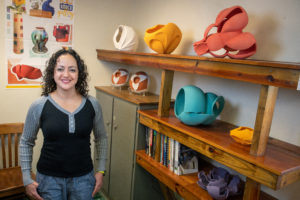
Her work has been selected for exhibitions curated by Dave Hickey, Judy Pfaff, Mel Chin, Roger Shimomura and James Surls. Her work has been included in exhibitions such as The Cello Factory in London, United Kingdom, Houston Center for Contemporary Craft in Houston, Texas, the University of Central Missouri, Verum Ultimum Art Gallery in Portland, Ore., and the Museum of Art at the University of Southern Mississippi. Her work is also part of the permanent art collection at the Daum Museum of Contemporary Art in Sedalia, Mo. and Casa Redonda Museum of Contemporary Art in Chihuahua, Mexico. Her pieces have earned her accolades, including the Award of Honor from the SWOPE Art Museum 73rd Annual Wabash Valley Exhibition. In 2022, she will also have a solo exhibition in The Art Museum of Greater Lafayette, Lafayette, Ind.
“I am currently part of a group exhibition in Chihuahua, Mexico that includes artists both from Mexico and the U.S.A that have studied under the professor who mentored me,” Enriquez said. “It’s not easy to come to come to U.S. from Mexico and study, so it’s big achievement for us to be able to do this.”
Enriquez decided to turn her interest in ceramics into a career in teaching thanks to an inspiration mentor in her graduate school years in Texas.
“My mentor, Piero Fenci, inspired me to become an art Professor, he inspired me with the way he approached students. After seeing him teach, I wanted to follow his steps,” she said. “When I started my art program in college, like most students, I thought I would only pursue an artist career. But after being transformed by my mentor’s caring example, I decided I wanted to make a difference with students. As faculty, I find a balance that allows me to do both – create and mentor students.”
Seven years ago, Enriquez began teaching at Indiana State, where she uses her platform as a professor to create a community in the classroom.
“I want my students to know they are part of the group by getting them involved, by being approachable and exposing them to contemporary and traditional artwork. My style is one that allows me to try to connect with students to better understand how they can bring their own experiences into their art,” she said. “I also like to show students the possibilities that their art career can bring them, like owning your own studio or doing commercial work, especially if they’re not interested in graduate school but still want to be independent artists.”
Enriquez also serves as the advisor for the ceramics guild on campus.
“It’s open to all students on campus and we try to create community of students who might be curious about art, specifically ceramics,” Enriquez said. “One of our goals is to expose the program to more people.”
The group meets at 5 p.m. on Tuesdays and Thursdays in the Art Annex studio, one of the goals is to create ceramic pieces to sell and raise funds to help them attend The Nacional Council on Education for the Ceramic Arts, an annual ceramics conference.
“The focus of the guild right now is on cups, which is something everyone uses in the winter, but the students are also making jewelry, tiles, coasters and bowls,” she said.
The guild was recently asked by the College of Arts and Sciences Dean Chris Olsen to create pieces that can be used as gifts for alumni and donors of the university.
“We’re starting to brainstorm ideas now and I think this will be a good experiential learning for students,” she said. “Not only are they being asked to represent the university, but they’re getting a chance to work with a client and create for a specific audience.”
